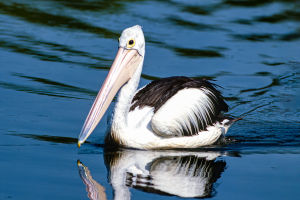The guanaco is a survival miracle in desert and arid environments.
It primarily inhabits regions such as the Gobi Desert and Kazakhstan in Central Asia, surviving in one of the harshest environments on Earth.
The guanaco’s survival ability not only demonstrates its adaptability to natural conditions but also serves as an excellent illustration of life's resilience.
1. Species Origin and Classification
The guanaco is a member of the Camelidae family within the order Artiodactyla, alongside the dromedary as the two extant members of the genus Camelus.
The guanaco has two humps, which are notably different from the single-humped dromedary. These two humps store large amounts of fat, allowing the guanaco to survive during periods of food and water scarcity. Paleontologists believe that the ancestors of the guanaco first appeared in North America and later migrated to Asia through the Bering Land Bridge, evolving into the species we see today under arid climate conditions.
Although the guanaco is similar to the domesticated Bactrian camel, there are significant differences in genetics and behavior. The wild guanaco population is extremely small, and the International Union for Conservation of Nature (IUCN) lists it as critically endangered. It is estimated that fewer than 1,000 wild guanacos remain in their natural habitat, primarily in the Gobi and Taklamakan Deserts.
2. Ecology and Behavior
Guanacos typically move in small groups within their habitat, usually led by an adult male, with several females and juveniles.
Their activity patterns are closely linked to seasonal changes; in summer, they migrate to higher elevations in search of sparse grazing lands, while in winter, they return to lower desert areas to take advantage of the limited available vegetation.
Guanacos are highly independent animals. Despite living in harsh environments, they rarely exhibit dependency. Male guanacos become highly territorial during the breeding season and often engage in fierce battles to compete for mates. Due to the extreme conditions of their habitat, wild guanacos have a low reproduction rate, typically giving birth every two to three years, usually to a single offspring.
3. Conservation Status and Challenges
Human activities have introduced several threats to guanaco survival. Illegal hunting, habitat loss, and competition with domesticated livestock are major challenges. In Kazakhstan, overgrazing and mineral extraction further constrict the guanaco’s habitat.
To protect this rare species, the Kazakh government has implemented various conservation measures. For example, protected areas have been established in the Gobi and Taklamakan Deserts to provide relatively safe environments for guanacos. Additionally, scientists are working to study guanaco ecology and genetics to better develop conservation strategies.
However, protecting guanacos remains a significant challenge. Monitoring and conservation work is difficult due to their remote desert habitats. Furthermore, with increasing aridity caused by climate change, food and water sources for guanacos will become scarcer. This requires conservationists to consider not only current threats but also to anticipate and address the long-term impacts of climate change on guanaco survival.
Summary
The guanaco’s survival symbolizes the resilience and adaptability of life in nature. As one of the few large mammals capable of surviving in extreme environments, the guanaco plays a crucial role in its ecosystem.
In the future, we should pay more attention to and support conservation efforts for these endangered species, not only to save a species but also to preserve the ecological balance between humans and nature.


